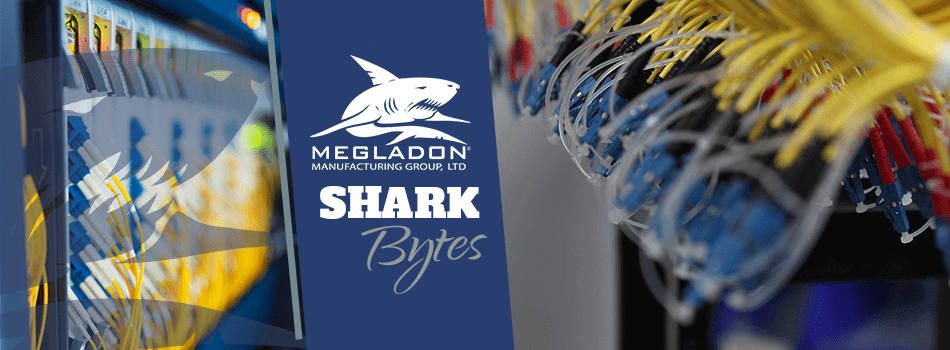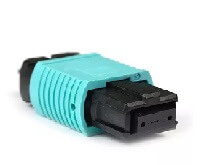
Guide to Fiber Optic Cable Connectors
Article by Jace Waechter
Published: November 19, 2019
Randomly choosing a fiber optic cable connector is a lot like aiming a bow and arrow blindfolded. By leaving it to chance, you’ll miss your target application through costly insertion loss and frequent repairs.
Still, choosing the right fiber optic connector is tricky – luckily, it’s not impossible to learn. While there are dozens of connectors, only a few dominate the marketplace. Among the most popular are LC connectors, SC connectors, ST connectors, FC connectors, and MPO connectors. These data doorkeepers are versatile enough to match with most fiber optic cables including singlemode cables and multimode cables.
But with so many different connectors, how do you know which one is right for the job? To begin, it’s important to familiarize yourself with each connector’s specific characteristics. So, here’s a quick rundown of the industry’s leading connectors.
LC Connector
| The LC connector is easily the most common fiber optic connector in the world. It’s about half the size of other connectors making it ideal for high-density patch panels. Additionally, LC connectors work well with singlemode cables, which transmit higher bandwidth over longer distances. LC connectors easily disengage from patch panels without using any special tools. Thus, in high-density fiber cabling, LC connectors allow users smooth and easy accessibility in tight areas and will avoid fiber loss from manual operation.
|  |
SC Connector
 | All fiber optic connectors are just tools in a toolkit for you to use on the right job. Following this logic, industry leaders and engineers turn to SC connectors for most of their simplex and duplex applications. It’s also favored for telecommunications and analog data communications. In addition, this connector features a snap-in design with a spring-loaded ferrule for fast deployment. |
ST Connector
| Bayonet fiber optic connector (BFOC) or more commonly known as stick and twist (ST) connector is the oldest connector in the group. Introduced in the 1980s, ST connectors have a bayonet design for rapid connecting. It was popular for campus, enterprise, and military multimode networks for a time. But these connectors don’t support Angled Polish (APC) preferred in today’s telecommunications and FTTX singlemode deployments. However, this “old faithful” connector can still be installed in legacy networks and run like new. |  |
FC Connector
 | This connector is a marvel of engineering. In addition to being spring-loaded like the SC connector, the FC connector also has a threaded housing around the ferrule like the ST connector. The hybrid design tightly secures the ferrule for extra ruggedness that’s popular for military applications. Although FC connectors are more expensive, users get every bit a bang for their buck. They are the most common connector in test and measurement with some of the best insertion numbers. |
MPO Connector
| Maybe the most talked about fiber optic connector in the industry is the MPO connector, which is used in high-density networks – this connector can support 12 and 24 fibers in one connector end face. What’s more impressive is that it saves significant space and cost by offering 12 times the density of standard connectors. Industry leaders appreciate the MPO’s versatile design, which improves and simplifies fiber routing. Also, MPO connectors serve as the backbone to many broadband networks, CATV networks, and other data communications including high-bandwidth equipment. |  |
What is an HLC Connector in Fiber Optics?
At Megladon, we improved upon the design of the industry’s leading connectors by adding our HLC® (Hardened Lens Contact) process. The HLC process can be applied to any type of connector we terminate, providing added qualities of durability and transmission. While scribing the fiber, this game-changing technology also hardens the end face lens – the part that transfers data (in the form of light) from one connector to another. In short, we can enhance your connectors’ durability and increase their performance by over 200%.
Conclusion
The purpose of fiber optic connectors is to allow you to connect and disconnect fiber optic cables quickly and safely. Most importantly, they align the fiber cores from two cables for light to pass from one connector and another. Using the right connector enables for easy reconfiguration of your network while introducing the advantage of:
- Low Cost
- Low Insertion Loss
- Ease of Use
- Reliability
- High Return on Investment
Choosing the right connector will save time, space, and reconfiguration costs. Our fiber experts at Megladon are happy to help you find the right application for your job. We can provide standard length assemblies like singlemode or multimode jumpers, plus build custom cables that fit your fiber needs. Find out more today by contacting us at (512) 491-006 or purchase fiber optic cables online at shop.megladonmfg.com.

